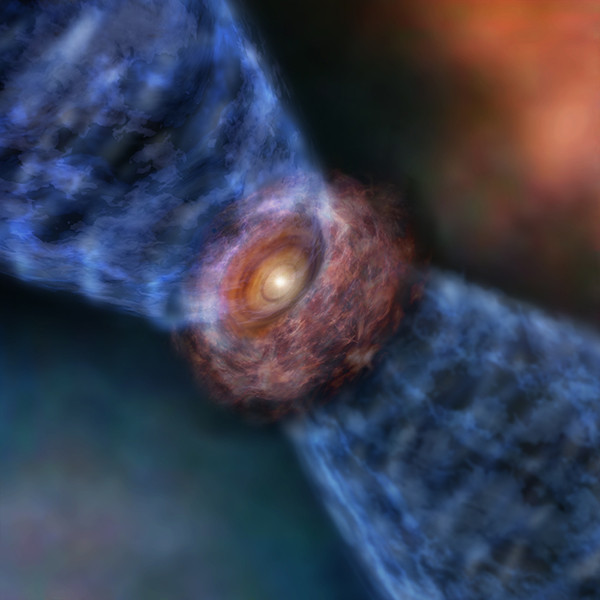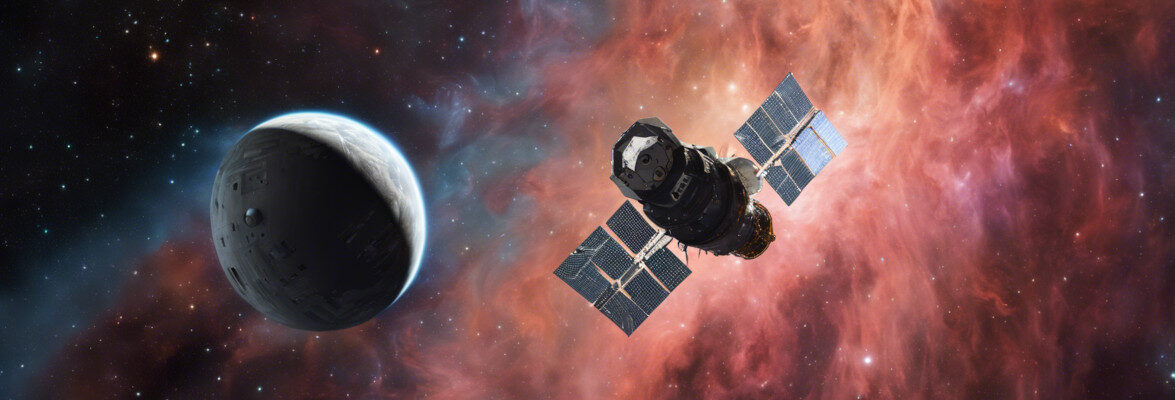
An article published in the journal “Nature Astronomy” describes a study of the massive newborn baby star Orion KL Source I. A team of astronomers led by Tomoya Hirota used the ALMA radio telescope to capture what was called the birth cry of that star and determine that its outflow’s motion and shape indicate that the interaction of centrifugal and magnetic forces in a disk surrounding the star plays a crucial role in that cry.
This research aims to understand a mechanism so far unclear in the formation of massive stars linked to the rotation of the gas that forms the cloud from which these stars form. That type of cloud rotates slowly in the initial phase and then accelerates when the cloud shrinks due to its force of gravity. The stars formed in that process are supposed to have a much faster rotation, an apparent contradiction with the observations that show a those stars’ slow rotation.
The underlying question is: how is the rotational momentum dissipated to form slow rotating stars? One possibility is based on the gas coming from newborn stars that can bring the rotational momentum away from the system if its outflow rotates. The problem so far was to obtain observations with a quality good enough of cases where the signatures of rotation were sighted but ALMA (Atacama Large Millimeter/submillimeter Array), inaugurated in March 2013, has enough power and sensitivity to carry out that job.
A team of astronomers led by Tomoya Hirota, an assistant professor at the National Astronomical Observatory of Japan (NAOJ) and SOKENDAI, used ALMA to observe Orion KL Source I, a newborn star in the Orion Nebula, about 1,400 light years from Earth. The result was very positive with clear images of the gas outflow and important details of the activation mechanism of that outflow.
The observations show the outflow’s rotation in the same direction as the gas surrounding the star confirming that the outflow plays an important role in dissipating the rotational energy. ALMA also shows that the outflow is launched not from the star’s vicinity but rather from the outer edge of the disk. This suggests that the mechanism is of a magnetocentrifugal type: in essence, the gas from the rotating disk moves outward from the disk due to the centrifugal force then follows the magnetic field lines to form the outflow.
This is the first time that astronomers can find proof of this mechanism in the case of a massive newborn star because other observed cases were farther away and therefore more difficult to study in the details needed. Previously, observations regarding a small mass protostar provided important data, now data of a massive star arrived as well. It’s another step forward in the research about star formation.



Permalink